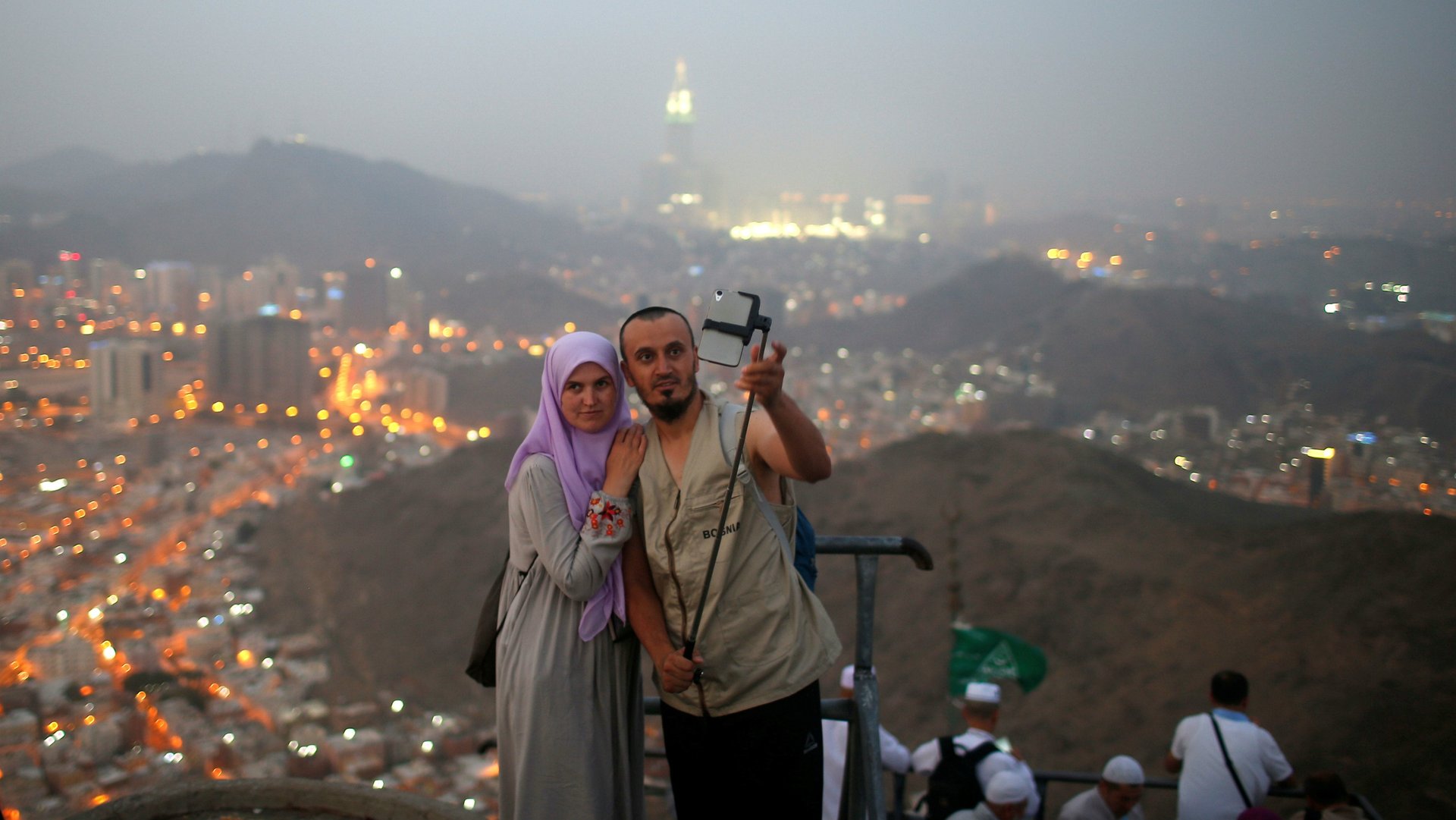Saudi Arabia will finally open its kingdom of archeology, architecture, and luxury to tourists
There’s a seismic change afoot in Saudi Arabia’s tourism industry this year: Officials have said that they expect to unveil a tourist visa in the first quarter of 2018, which visitors will reportedly be able to apply for online. The move marks the first time the kingdom opens its tourism doors to the global masses.


There’s a seismic change afoot in Saudi Arabia’s tourism industry this year: Officials have said that they expect to unveil a tourist visa in the first quarter of 2018, which visitors will reportedly be able to apply for online. The move marks the first time the kingdom opens its tourism doors to the global masses.
While Saudi Arabia is no stranger to foreign visitors—the nation welcomes two to three million Mecca-bound pilgrims celebrating the Muslim tradition of hajj each year—visas have previously been arduous to get and restricted to business travel, religious pilgrims, and resident workers along with their dependents. In other words, everyone but your average leisure traveler.
The decision to welcome “all nationals whose countries allow their citizens to visit” is perhaps the most visible part of a mission by Crown Prince Mohammed bin Salman—the iconoclastic figure often referred to as as MBS—to attract a different type of image and visitor to the country. A slew of projects—including building resorts on a 100 miles stretch of Red Sea coastline and a Six Flags theme park—are also in progress to boost the kingdom’s tourist appeal beyond its religious sites. And the nation offers incredible archeological must-visits, such as the splendidly-preserved (and little-visited) site of Madain Saleh. The ancient Nabatean city rivals Jordan’s famed Petra for pink-hued beauty and offers serious Instagram-worthy bragging rights.
With recent policy reversals including giving women the right to drive and allowing movie theaters to open in the country, the Prince appears keen to reverse the kingdom’s notoriously conservative image to usher in what he calls a “a moderate Islam.” However, the push for more international tourists isn’t just a branding exercise, it’s a bid to diversify the nation’s oil-dependent economy, too. According to CNN, the country is “aiming for 30 million visitors a year by 2030, up from 18 million in 2016, and it wants annual tourism spending to hit $47 billion by 2020.”
Though neighboring Gulf states have found considerable success attracting a new kind of western tourist—including with projects as grand as a Mars simulation—Saudi Arabia faces some challenges. In November, the US State Department updated its travel advice to American travelers, citing the risk of “continuing threats from terrorist groups and the threat of ballistic missile attacks on civilian targets by rebel forces in Yemen” as reasons to think twice about planning a visit. Many of the reported risks are centered around the city of Jeddah, which serves as the gateway to Mecca, and the capital city of Riyadh—both places tourists are likely to visit.
Furthermore, activist groups including Human Rights Watch have said that while MBS’s reforms may be garnering positive headlines, the leader should still be sanctioned over abuses in neighboring Yemen and his detainment of Saudi elites late last year without concern for due process of law. And then there’s the fact that many western tourists may be unsure of how to act, what to wear, or whether they can drink alcohol on their Saudi Arabian getaway.
That being said, for some tourists, a destination that hasn’t reached the mainstream yet—or even one that’s still perceived as dangerous—can be a draw. If all goes according to MBS’s plan, this time next year could see a very different kind of visitor exploring the kingdom.